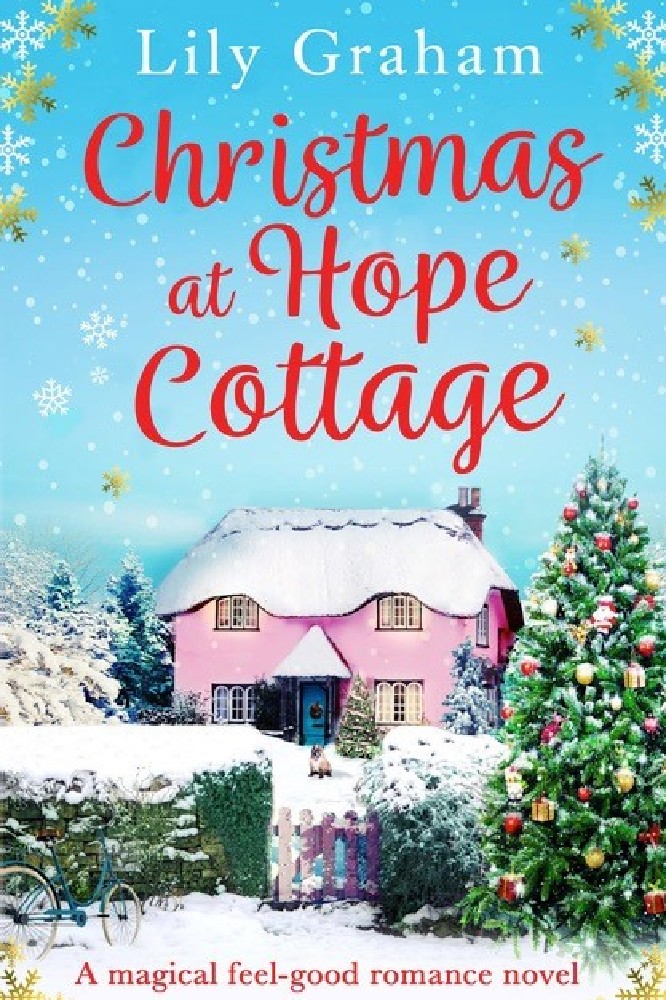Layering two genres is a balancing act. Every author has their own style, but the books I write are a blend of genres. From romance to mystery and magical realism, often with humour and deeper emotional themes, it all goes into what I write and it can be a challenge to ensure that this mad mix makes sense. It takes a lot of back and forth and sometimes a bit of a rethink – but ultimately, I feel it’s what makes writing fun for me.

Christmas at Hope Cottage
Creating characters that feel real. I love writing characters, they are my favourite bits and I want them to feel as if they were leaping of the page, fully formed. I want each one - even the very minor ones to feel separate and distinct. I write about the sorts of people enjoy spending time with. I want them to feel human, in the sense that they would be operating in the real world. For instance, people can have silly moments but they wouldn’t necessarily be that way all the time. When I feel like I know my characters the story flows – and often needs to change to fit them.
It’s okay to lighten up. There’s a moment during every single book I write when I’m convinced that the tone doesn’t work because I’ve now introduced humour to the mix. The humour always comes, I can’t help it, especially when I’m trying to be ‘serious’. I used to fight this, but now I’ve realised that it’s more real to life – even in the darkest moments people will crack a joke, it’s what makes life so great. Thankfully I have an editor who always encourages me to bring my funny bone to the table.
Just add more. Years of being a journalist trained to write to a deadline, with a strict, concise number of words has given me a weird predicament where my stories are often shorter than they should be. The nice thing about fiction is you can take a bit more time, and take up a bit more room too! I often get notes back from my editors saying things like, ‘More words! More Christmas! More Romance! More is better.
If you cry so will the reader. When I’m writing a story the bits that people connect with most are the scenes that I ‘felt’ when writing. So, laugh at your own jokes, cry when you write something sad – and get mad when you’re having an argument. It isn’t pretty all this ‘method writing’ but the dog doesn’t seem to mind (much).
Come out of the rabbit hole. I love research, and I can easily spend months being lost in it without writing a word of my novel. I’m currently going through this with my latest novel – deep in the clutches of analysis paralysis, where I’m stuck because I’m terrified of getting things wrong. The thing with research is that a little can go a long way, and it’s best to do it as you write, or write an ‘x’ and come back to that bit. That’s what I ended up doing with my first novel set in Crete which needed lots of research on vineyards, the island itself as well as a certain mysterious, nefarious plot that had me looking up police procedure.
Keep the story turning. Ken Follet said that every few pages the story needs to turn, and by that he meant something new or surprising or perilous needs to happen. It really is the one writing rule I stick to more often than not. I think it’s the reason that often reviewers will tell me they couldn’t put the book down or had to stay up late finishing the story – and I love that, so thank you Mr Follet!
You can’t please everyone, so write the story in your heart. At the end of the day you need to be writing a story you believe in. There are times when I second-guess myself, picture my editor’s reaction or the readers, and there will be a danger of censuring the story but I can’t let that happen, I’ve got to block that out and write the story the way it is even if I know some people won’t like that – for instance, in Summer at Seafall Cottage the ending was powerful, sad and in some ways raises lots of questions, and I knew some people would hate that – but I felt like any other ending would have let the story down so I had to stick to my guns, luckily most of my readers agreed but some didn’t, and that’s okay.
Let go of the ‘perfect’ story in my head. This one is tough, but I often (always) have this idealised version of what I’d like the book to be. The problem is that when I start to write it, it never comes out that way and it’s easy to get discouraged. The only way to get around this is to change the goal from writing a perfect book to a finished book.
Remember that books are like sketches. Like any artist who sketches then erases a line here and there. Novels are pliable. Words shift around, change shape and texture, and get deleted. Sometime you’ve got to make a mark just so you can make it stronger later. It’s often in the editing that the story only starts to really get inked in.

